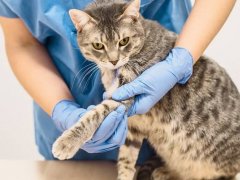
Lethabo Joy / Shutterstock.com
A swollen paw is one of the more common ailments that cats can suffer from. This article aims to explain the possible reasons for a swollen paw, and explain to cat carers the best way to help their cat in this situation.
The definition of a swollen paw is simple: the paw looks bigger than normal. It’s easy to judge this by comparing the paw with the paw on the opposite side. They should be the same size. If one is bigger, it’s swollen. ( In theory, a cat could have two swollen paws at the same time, but this is rare.)
Causes of Swollen Paws in Cats
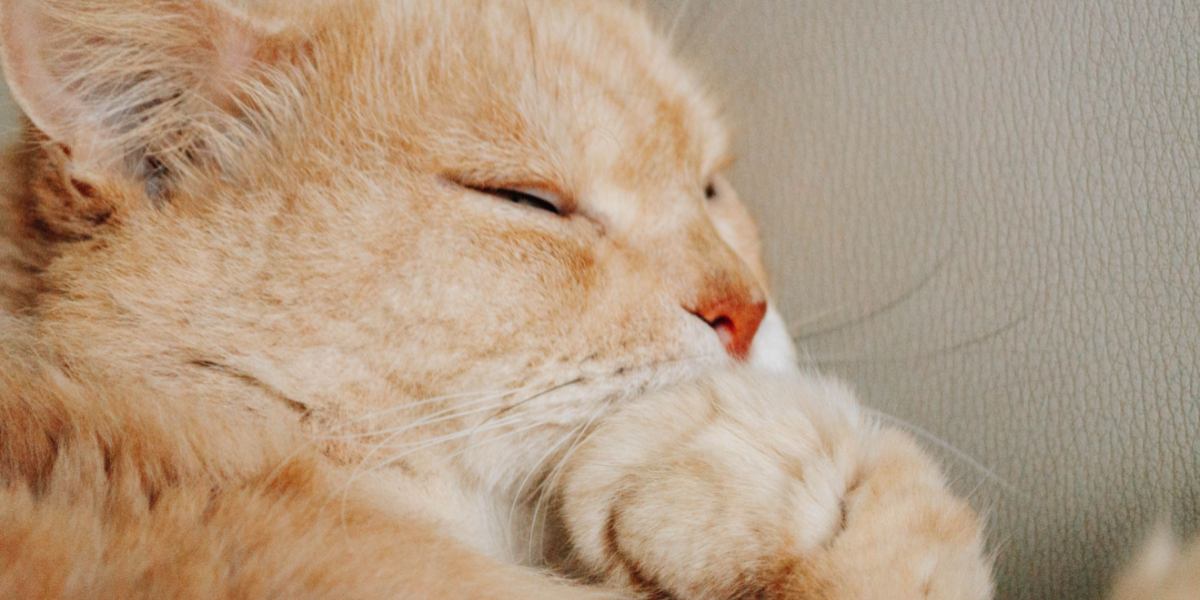
If a swollen paw is not painful, the cat will walk on it normally.
Very broadly, there are two types of swollen paws in cats: swollen paws that are also painful and non-painful swollen paws.
It’s easy to tell the difference. A cat will limp if their paw is painful (they might hold the paw in the air, or the lameness may be more subtle). If the paw is not painful, they will walk normally. Additionally, if the swelling is caused by inflammation (such as allergic reactions), then the paw might feel itchy and uncomfortable. This is discomfort, which is a milder form of pain.
Also Read: 10 Interesting Facts About Cat Paws You May Not Have Known
Causes of Painful Swollen Paws

In some cases, X-rays might be recommended to discover the cause of a painful swollen paw.
If a swollen paw is painful, it could be caused by many different things. Some of the more common include:
- Cat bite: This is the most common cause of a swollen paw. A cat is often bitten on the paw by another cat during a fight, and this becomes infected, creating an abscess, which causes swelling and pain. Sometimes it’s obvious that the cat has been in a fight (you might have seen or heard it) but other times, you might not be aware of the incident. If you examine the paw carefully, you will often find a bite mark or a small scab on the surface of the skin over a bite mark. A scratch from a fight can also allow infection to develop.
- Other causes of infection and abscesses: Any puncture wound (a bite from a rodent when hunting, standing on a nail, etc.) can allow the introduction of infection, leading to an abscess as above.
- Sprain: If a cat twists their foot, the joints may be sprained leading to swelling and pain.
- Fracture: If a cat falls, or is involved in an accident, broken bones inside the foot, or broken legs, can cause painful swelling.
- Crush injury: If the paw has been crushed (e.g., in a road accident, or any trauma), it will be swollen and painful, but you will not be able to find a bite mark or scab.
- Arthritis: Arthritic joints are often swollen and painful, and if the joints in the foot are swollen, arthritis is a common cause. Your cat’s mobility might be reduced. It’s worth taking time to monitor their activities carefully (e.g., how they jump up and down from chairs, how they negotiate staircases, how they use a scratching post, etc.).
- Burns: If a cat stands on a hot surface like a stove burner, the sole of the foot might be burnt, leading to painful swelling of the underside of the foot. Chemical burns from standing on something caustic can cause similar damage.
- Ingrown claws or nails: If a nail grows too long and curved, it might dig into the soft skin at the nail base, and this might then become infected, leading to a painful swollen paw.
- Insect stings or bites: A bee or a wasp sting can cause swelling and discomfort, as can spider bites.
- Snake bite: If a cat is bitten on the paw by a snake, this can lead to painful swelling.
- Foreign objects such as thorns, splinters, grass seeds, or shards of glass can cause swollen paws.
- Bone disease: Rarely, a number of different bone diseases can lead to painful swellings of the paw, including bone infections and bone cancer.
- Soft tissue disease: Again, rarely, different diseases of the soft structures of the foot might lead to painful swelling, including different types of tumors and infections.
Also Read: What To Do If Your Cat Is Hit By A Car: A Step-By-Step Guide
Causes of Non-Painful Swollen Paws
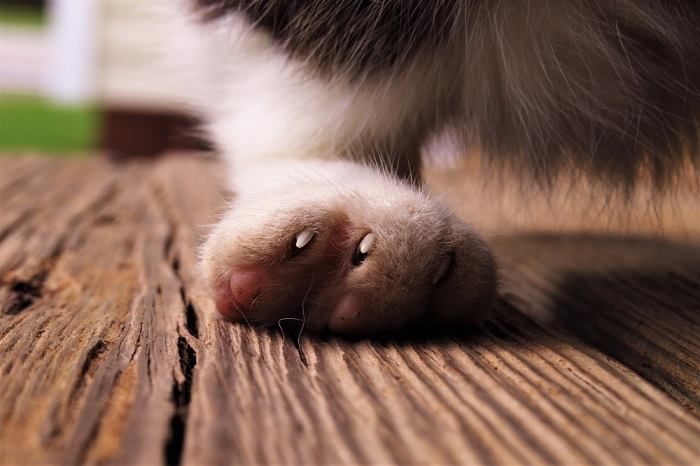
Edema, which is swelling caused by abnormal fluid accumulation, can cause non-painful swollen paws.
All of the above causes of painful swollen paws might also cause non-painful swollen paws in the early stages of the condition. Cats have varying pain thresholds, and can be good at covering up signs of pain, especially if they are stressed and if the condition is in the early stages. Some other causes of non-painful swollen paws include:
- Edema of the paw can happen for a number of medical reasons, with fluid leaking out of the bloodstream into the subcutaneous area and soft tissue of the foot, presenting as non-painful swelling. Often this happens in both feet (or all four feet) rather than just one foot.
- Pillow paw, or feline plasma cell pododermatitis, is an allergic-type or auto immune reaction that can cause swelling of the soft tissues of the paw pads with infiltration with particular types of lymphocytes. The metatarsal pad, higher up the leg, is often affected by this exaggerated immune response, as well as sometimes the digital pads.
- Eosinophilic granuloma type reactions can cause an allergic type skin swelling and reaction that can present as a swollen paw.
- Rare bone diseases can occasionally cause non-painful swollen paws (e.g., hypertrophic osteopathy).
Also Read: Do Cats Have Scent Glands In Their Paws?
Should You Go to the Vet?
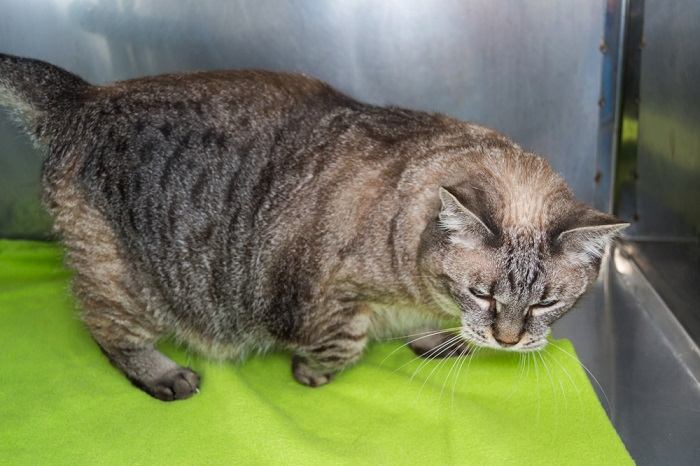
A swollen paw should always be checked out by a veterinarian, urgently if the paw seems very painful.
If a cat has a painful swollen paw (i.e., they are limping or holding the paw up), you should go to the vet without delay. If this happens after hours (night time or weekend), then it is not usually an emergency, but you should arrange to go to your regular daytime vet as soon as they open. However if you feel your cat is suffering significant pain, you should go to the emergency vet, as you would do in any other similar situation.
If your cat has a non-painful swollen paw, and they seem well generally, you can wait until your daytime vet is open before taking them to be checked.
Also Read: What Can You Give A Cat For Pain? 6 Vet-Recommended Options
Investigating a Cat With a Swollen Paw
It’s important that an accurate diagnosis is made of the underlying cause of the swollen paw by your veterinarian.
1. Detailed History Taking
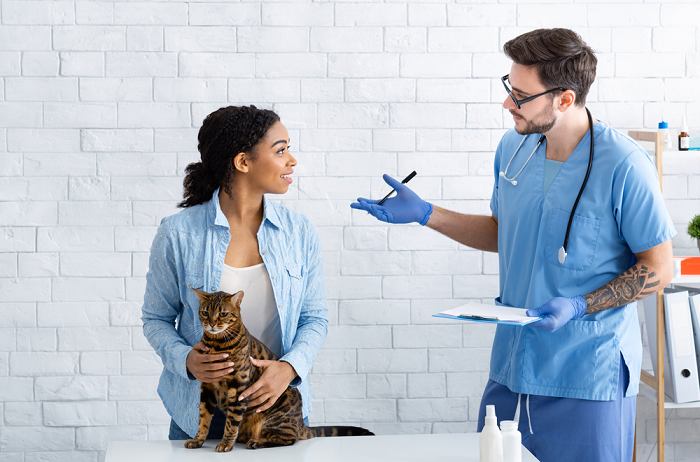
Your vet will ask many questions about your cat’s lifestyle and routine.
Your vet will discuss every aspect of your cat’s lifestyle and review their overall health. This careful history gathering will help to pinpoint the cause of the swollen foot. Many factors are important in this history. For instance, senior cats are more prone to certain problems than younger cats and cats that are free-ranging are more prone to some problems than indoor-only cats (cats that don’t go outdoors are not likely to have been in a fight or suffered an accident).
Your vet will also ask you if you have noticed any other symptoms of illness.
Also Read: Osteoarthritis In Cats: Causes, Symptoms, & Treatment
2. Physical Examination
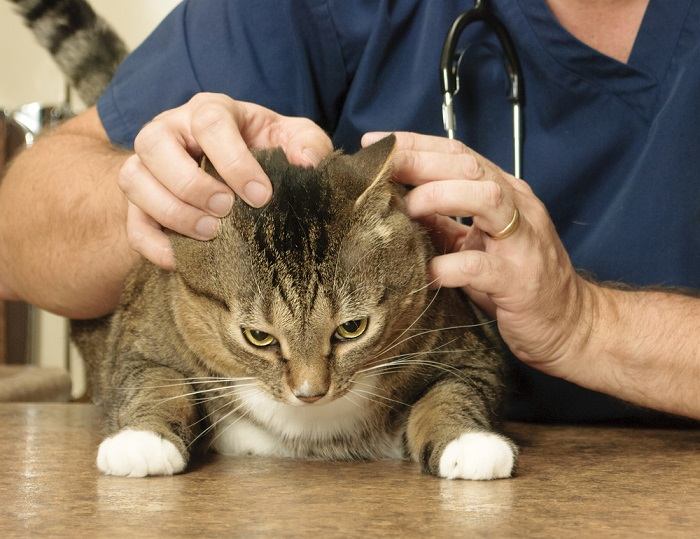
During the physical exam, the vet will check over your cat’s entire body in addition to the paw.
As well as closely examining the swollen foot (including the foot pads, the digits and the cat’s nails), your veterinarian will check your cat’s body carefully, feeling the cat all over, checking for any abnormalities.
This will normally include taking the cat’s temperature, listening to their chest with a stethoscope, checking their lymph nodes and weighing the cat. These aspects may not seem relevant to a swollen paw, but sometimes surprising and helpful findings may be made.
Also Read: How Much Does It Cost To Own A Cat In 2023
3. Routine Blood and Urine Tests
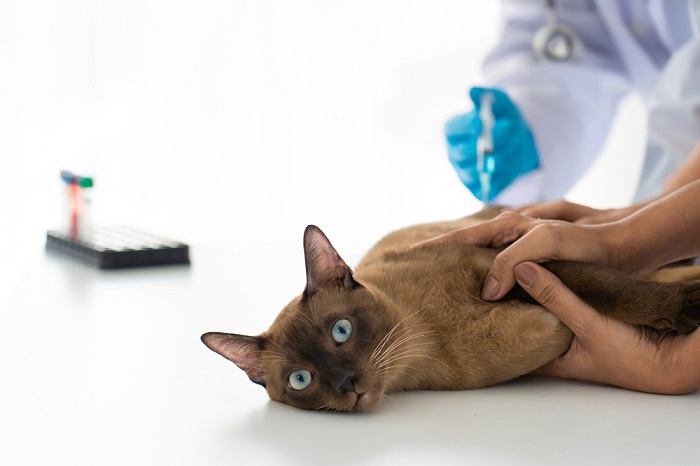
Veterinarians often recommend checking blood and urine when investigating any sick or injured cat.
As part of a general review of your cat’s health, your veterinarian may suggest blood work, including a panel of diagnostic tests, such as hematology (complete blood count or CBC) and biochemistry profiles (including liver and kidney parameters).
Simple urine tests may also be carried out. This type of work up is known as the minimum database, and it’s carried out to review most sick cats, regardless of the signs of illness. The results often provide helpful guidance toward better understanding of the cause of the swollen foot.
Your veterinarian might also recommend specific blood tests, such as antibody or antigen tests for some viral infections such as feline leukemia virus (FeLV) and feline immunodeficiency virus (FIV), since there are significant implications if your cat is positive for either of these.
In simple, short-term cases, this blood work might not be suggested or recommended. Veterinarians might take a different view on how much investigation needs to be done on day one, depending on the specifics of the case.
Also Read: Anemia In Cats: Causes, Symptoms, & Treatment
4. Additional Tests
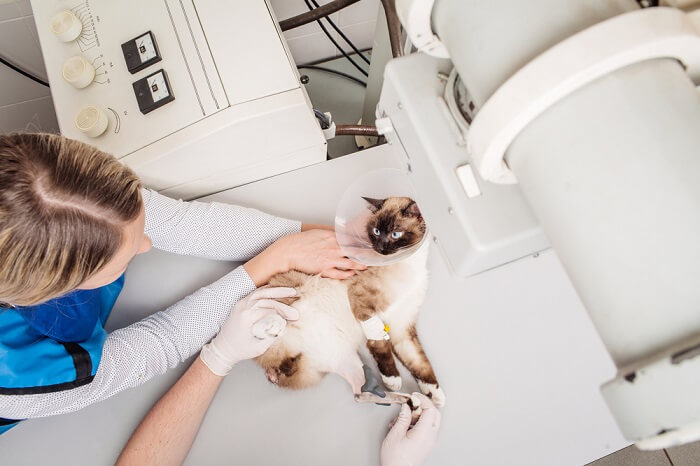
X-rays might be recommended so the vet can look at the bones and other parts of the paw.
In some cases, radiography (x-rays) might be taken to examine the details of the internal structures of the foot and leg, and occasionally to check other parts of the cat’s body (such as the thorax and lungs) if some type of connection between the swollen foot and another underlying condition is suspected. Rarely, ultrasound or advanced diagnostic imaging like CT or MRI scans might be suggested.
A fine needle aspirate or a full biopsy (to collect a section of tissue) might be taken if a more unusual cause is suspected.
Also Read: What To Know When Adopting A FIV-Positive Cat
5. Referral to a Specialist
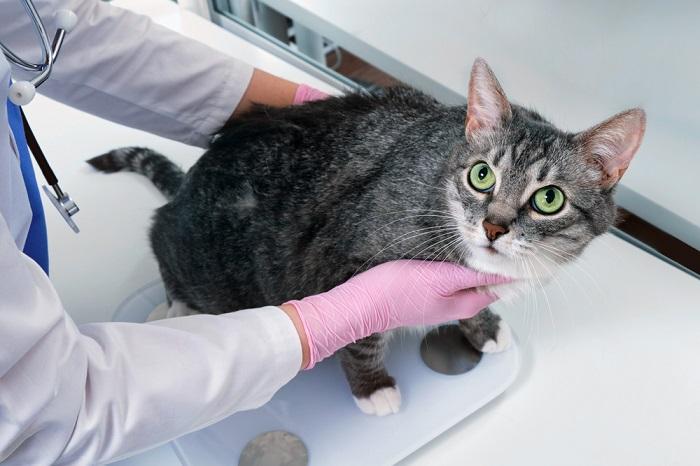
Veterinary specialists can help if your regular veterinarian is not sure what’s causing the swelling.
If there are aspects of the case that seem particularly unusual, your regular veterinarian may recommend referral to a veterinary specialist, who has a particular interest in investigating and treating rare causes of a swollen foot.
Also Read: Best Pet Insurance For Cats In 2023
Treating a Cat With a Swollen Paw

Once your vet has determined the cause of the swollen paw, treatment can be initiated.
The precise type of treatment needed for a swollen paw depends on the underlying cause of the swelling.
- Where there is infection (e.g., cat bite, abscess, puncture wound, etc.), antibiotics will be prescribed, either with a short-term injection and a course of oral antibiotics, or a long-lasting injection. Your vet will prescribe the most suitable antibiotic, depending on the suspected cause (e.g., cephalosporins, penicillins, etc.). You will also need to bathe the affected area twice daily in mildly salty water, to clean away any pus that might gather.
- Where there is pain as well as swelling, pain medications (e.g., non-steroidal anti-inflammatory drugs) will often be prescribed. It’s important to remember that many of these drugs can cause vomiting and diarrhea, so careful monitoring of this aspect of your cat’s life is important. If your cat has kidney disease, alternative medications might be suggested.
- For all conditions, enforced rest is an important part of treatment, keeping cats indoors and under close supervision until the swelling resolves.
- Where an allergic or immune-type reaction is suspected, such as plasma cell pododermatitis or eosinophilic dermatitis, anti-inflammatory medication (e.g., steroids or prednisolone) might be recommended to dampen down the immune system. The antibiotic doxycycline is sometimes recommended for plasma cell pododermatitis as it seems to have some extra anti-inflammatory properties.
- Obvious problems such as overgrown nails will be treated by trimming the nails.
- Insect bites or stings will often resolve by themselves within a few hours.
- Snake bites may need antivenom injections.
- Where there is a rare incurable local cause of the swelling (e.g., a tumor of the toe), surgery might be recommended to amputate a digit, or very rarely, to amputate a limb.
- For those very rare, more serious systemic causes, a range of possible treatments are available, tailored to the specific cause.
Also Read: Cat Back Legs Collapsing: Causes, Symptoms, & Treatment
Swollen Paw: In Summary
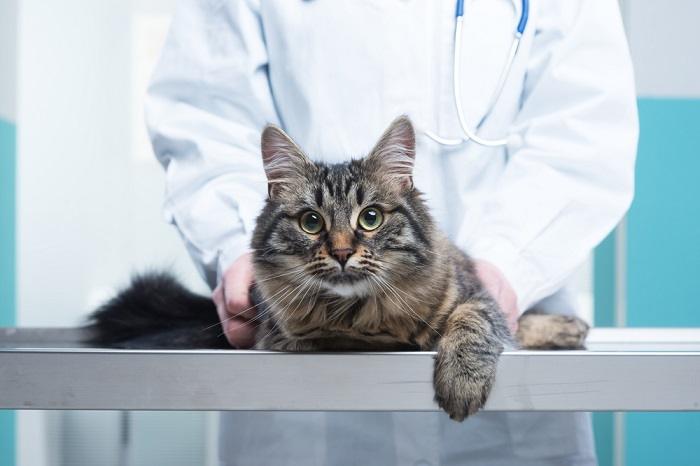
Most cases of swollen paws are easily treated with your veterinarian’s help.
A swollen paw is common problem in cats, and most cases have simple causes that can be effectively treated, restoring normality within a few days. There are rarer, more complex causes, and a detailed assessment by a veterinarian is the safest approach.
Also Read: 9 Things You Probably Didn’t Know About Polydactyl Cats
Frequently Asked Questions:
What to do if cat's foot is swollen?
If there is only minor swelling, and the cat is not limping, then you might wish to simply rest the cat, keeping them indoors, and monitoring the situation. However if the swelling does not resolve within two days, or if the cat is in pain (e.g., limping or licking the foot repeatedly) then you should take the cat to your veterinarian without delay.
How long does it take for a cat's swollen paw to heal?
The speed of recovery depends on the cause of the swollen paw. With veterinary treatment, a simple mild crush injury should resolve within two days and a typical cat bite abscess might take seven to 10 days to fully heal. More serious causes (such as bone cancer) might have an entirely different course of disease.
Will a cat paw infection heal on its own?
A paw infection is unlikely to heal on its own; antibiotics from your veterinarian are likely to be needed.
How can I treat my cat's injured paw at home?
With a minor injury, you might wish to try a simple approach of resting your cat (keeping them indoors), and bathing any minor wounds twice daily using a teaspoonful of salt in a pint of boiled water, cooled down to room temperature. However, if this is not effective in resolving the problem within two days, then you should take your cat to the veterinarian.



